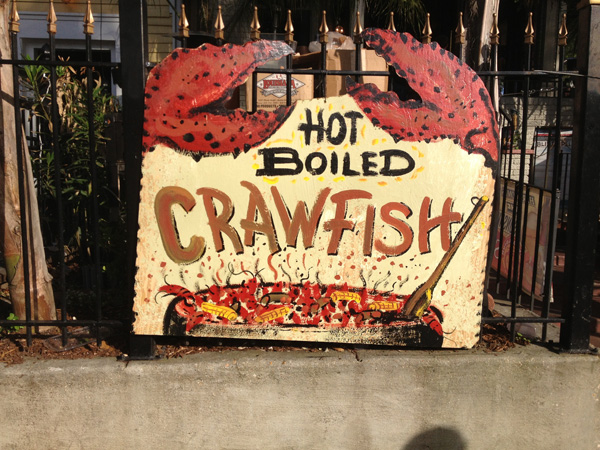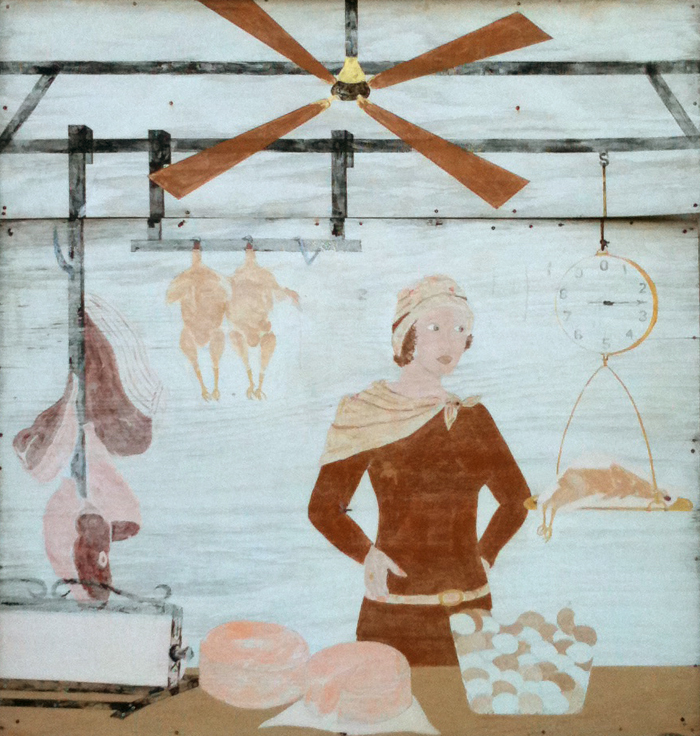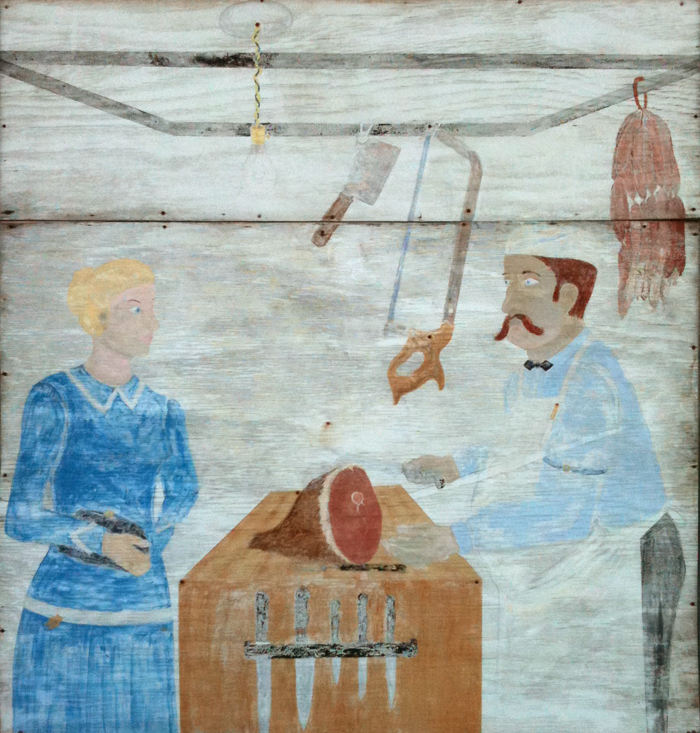This Dante-esque pot of crawfish is brought to life by a festive splatter of scalding viscera. The huge claws at the top imply that the crawfish masses are being boiled by a giant evil crawfish, the Punisher. Those two crawfish that are trying to escape can just forget about it; like the damned in this Fra Angelico painting from the 15th century, they will be paddled back in.
(Terpsichore & St. Charles Ave.)


